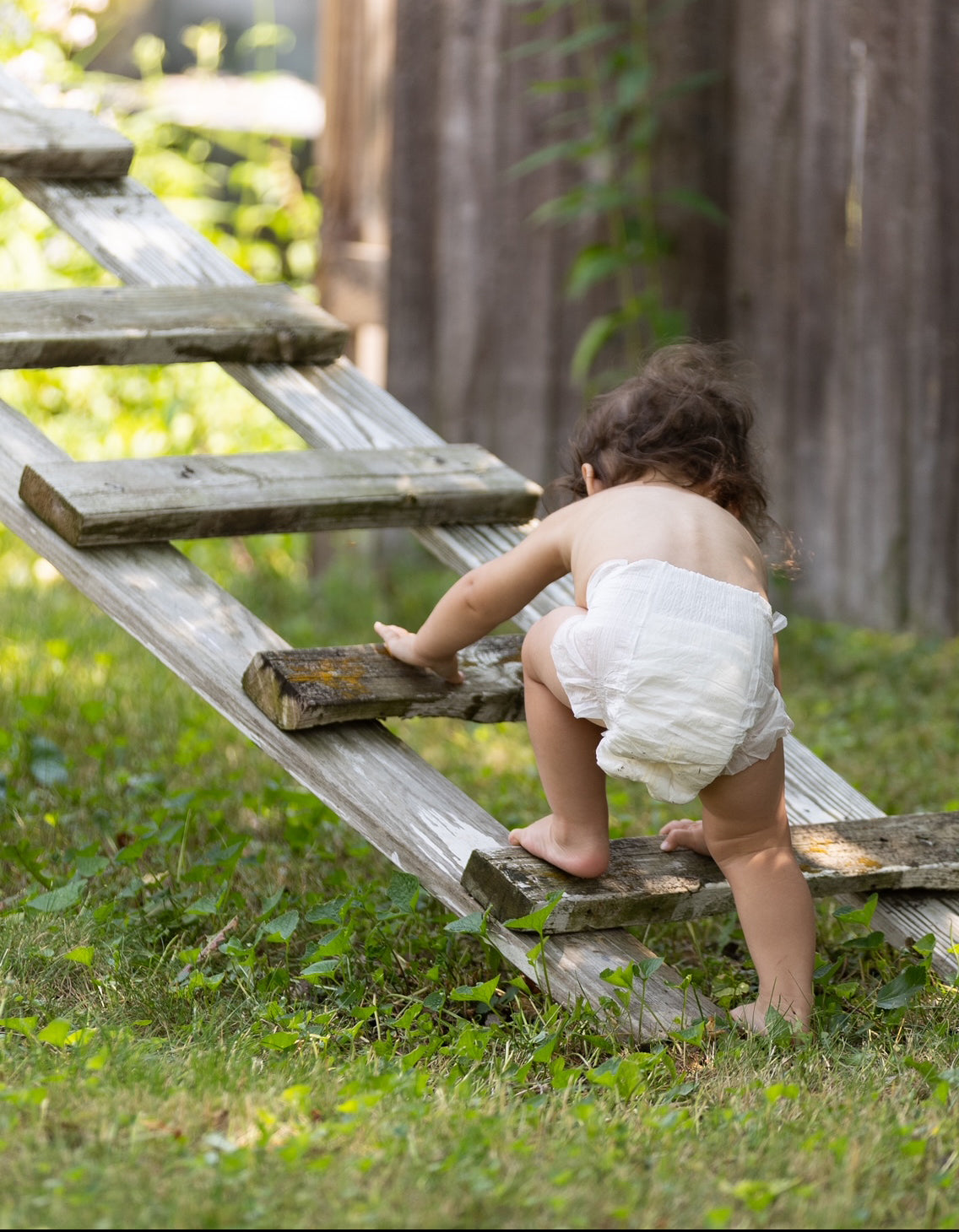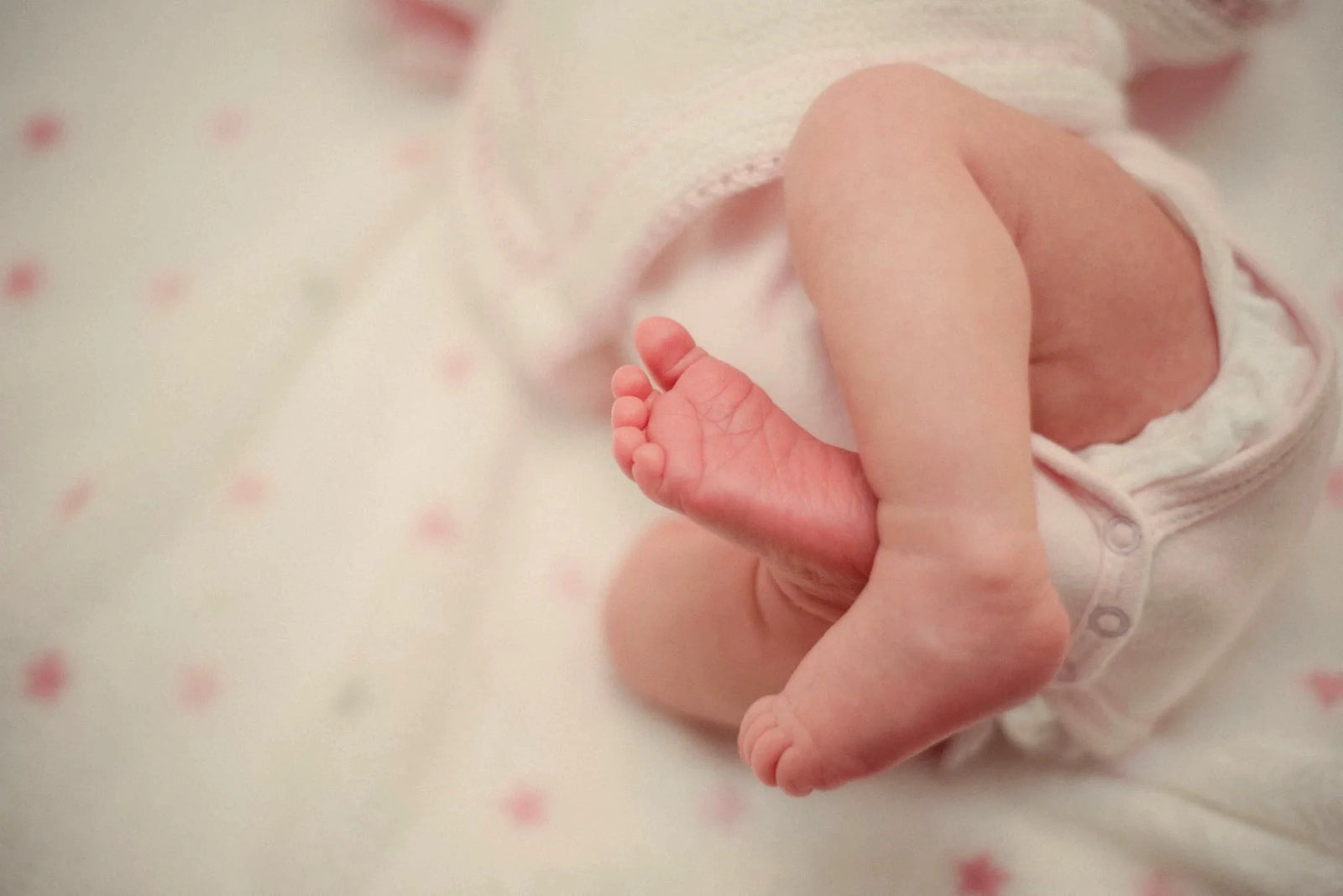Your body moves and feels different after having a baby. The uterus contracts down to a pre-pregnant size over the course of 6 weeks, bones shift, organs return to their usual position, breasts swell with milk, shoulders round from holding baby, backs strain as the abdominals re-connect.
Between baby feeds, diaper changes, naps, preparing meals for yourself, and daily tasks you likely need nurturing for yourself. But fitting in a massage, work out or even a shower is often just too much. But you can squeeze in these 5 simple postnatal yoga stretches throughout your day to help you feel your best. They don’t take long or require special equipment and can be done anywhere. Yoga for new moms is one of the best ways to help cope with depression and PTSD.
Neck

Check out the current position of your head. Likely, your chin is jutting forward, your neck is rounded and your gaze is down. Text neck might as well be baby gazing neck. First, reset your alignment. Align your shoulders over your hips, seated or standing. This will straighten your spine. Allow the shoulders to naturally rest down and away from your ears. The vertebrae of the neck rise up and allow the crown of your head to reach towards the sky. Soften your brow and jaw by allowing the teeth to part and the tongue to ease away from the roof of the mouth.
Reach your right hand up and place your right hand on the left side of your head by reaching over the top and draw the right ear towards the right shoulder without force. The hand is a gentle guide that provides slight traction to guide the ear toward the shoulder. Check in with the left shoulder and visualize tension melting away from the left shoulder and side of the neck. Breathe into the space created. After several breaths, or when you feel ready, gently release the hand and guide your head back up to the center. Repeat on the other side.
After you’ve done the right and the left sides, create slow circles with your head in all directions, being mindful not to crane back too far. After 3-5 circles in one direction, reverse.Moves like this are shown to reduce tension and anxiety.
Watch the full demonstration here.
Wrists

Carpal tunnel is common in pregnancy and may take time to resolve after birth. Even if you did not experience carpal tunnel syndrome, your wrists may feel tender after so much time holding baby. Those tiny things get heavy quite fast! Start by interlocking fingers together, palms together. Create circles with the interlocked hands. After 5-10 circles, repeat in the other direction.
Now, extend your right arm out, flex the palm and fingers up. Using the left hand, press against the bottom surface of the fingers to gently ease them towards your body, maintain the flexion. Release the fingers and repeat with the thumb. Now flex the fingers down towards the ground and repeat the flexion from the top side of the fingers to feel the stretch on the top of the wrist. Repeat the entire sequence on the left side.
Watch the full demonstration here.
Shoulders and Chests

The weight of enlarged breasts as well as the natural reflex to curl around and protect our babies creates strain in the shoulders and chest. Practicing chest openers throughout your day can help relieve tension and improve posture. There are a few different chest opening stretches that I love that can be done anywhere.
Begin by interlocking your hands behind your back, giving the elbows a slight bend. Very gently, raise your fist up until you feel a comfortable stretch. If your arms do not have the space to interlock your fists behind your back, you may grab opposite bent elbows or use a hand towel to hold in each hand to allow more ease. Hold at your comfortable maximum for several breaths and then release. Repeat with the opposite interlacing of fingers. Performing moves like this is a great way to get your body moving again after giving birth.
Watch the full demonstration here.
Back

Our backs are a part of the core unit. And when abdominal muscles get weakened, the back tends to compensate for the load. Add carrying around the weight of a growing belly and then baby and there’s even more strain. Cat/Cow pose is a wonderful way to stretch the back body and is safe to do in pregnancy and postpartum. When doing this stretch, really focus on the breath and linking the gentle movement. When you go slowly, you can feel the articulation through the vertebrae and the muscles releasing.
To do this stretch, come onto hands and knees. Align your shoulders over your wrists and your hips over the knees. If you feel pain in your wrists you can make them into fists or place your hands on yoga blocks. Allow the gaze to be a few inches in front to reduce crunching in the neck. Inhale deeply and allow the belly to fill with air. On the exhale, engage the core and pelvic floor muscles as you round your back and bring your gaze to your belly button in cat pose. Tail bone draws down as your press into the shins and hands, allowing the shoulders to press away from the ears.
On the inhale, articulate through the spine into a cow pose. Gaze lifts in front of you as the heart shines through the collarbones. The belly drops, but without fully releasing down. The pelvis spills forward to allow the sitz bones to spread. Cow pose is less about the belly dropping down and more about the action of the chest and pelvis opening. It’s extra yummy to allow the jaw to soften and to invite more ease and opening.
Fun fact! The jaw and pelvic floor are directly connected so relaxing the jaw will also allow you to relax your pelvic floor. Repeat 5-10 rounds of cat/cow, continuing to move slowly with the breath.
Watch the full demonstration here.
Hips

Quite literally, your hip bones have shifted from pregnancy to create space for your baby to grow and exit your body. Postpartum they are shifting again to return back together. I personally felt an incredible ache in my hips postpartum and found relief in hip stretches. A seated posture, like gomukhasana or cow face pose, can feel lovely.
To do, find yourself in a comfortable crossed leg position. Draw the bottom knee in line with your center, pointing forward from the knee cap. Stack the top leg on top, flexing both feet to protect the knee joints. Don’t worry if your knees do not stack one on top of the other. A pillow, rolled-up towel, or blanket can create a wonderful cushion between the knees. Allow the spine to rise up tall, relax the shoulders away from the ears, rest your hands at your ankles. And breath deeply, sending your breath down to your hips. I like to imagine each breath moving into spaces that feel tight and clearing away the tension.
Alternatively, if this posture feels inaccessible, don’t fret! You can create a figure 4 stretch. Sit up tall, extend one leg out long while bending the opposite leg into a number 4 shape. Place the bent leg’s ankle above the knee onto the extended thigh. Flex both feet, again to protect the knees. If the bent knee doesn’t feel good with gravity pulling it towards the ground, place your cushy prop (pillow, blanket, yoga block) under the knee to lift it. Hands can be by your side as you raise your spine and crown of the head tall. If you’d like to go deeper into the stretch, walk your fingers forward towards a forward fold, keeping the spine straight until you reach a stretch that feels right for you. Hold for about 1 minute on each side.
Watch the full demonstration here.
The Takeaways
All of these simple stretches can be done while playing with your baby, during nap time, or squeezed in between household tasks.You can even look for postnatal yoga classes if that’s more your style. Finding these moments to care for your own body will allow you to be the best version of yourself to care for your baby.The postnatal yoga benefits we’ve covered here, we hope, will give you more insight as to whether you could see it being the right solution for you. As a doula I’m always saying “you can’t pour from an empty cup” and it really is true. You give so much, mama. Give back to yourself as well.
By: Erin Pasquet
Birth and Postpartum Doula
Childbirth Educator
Certified Lactation Counselor
Pre/Post Natal Yoga Teacher



